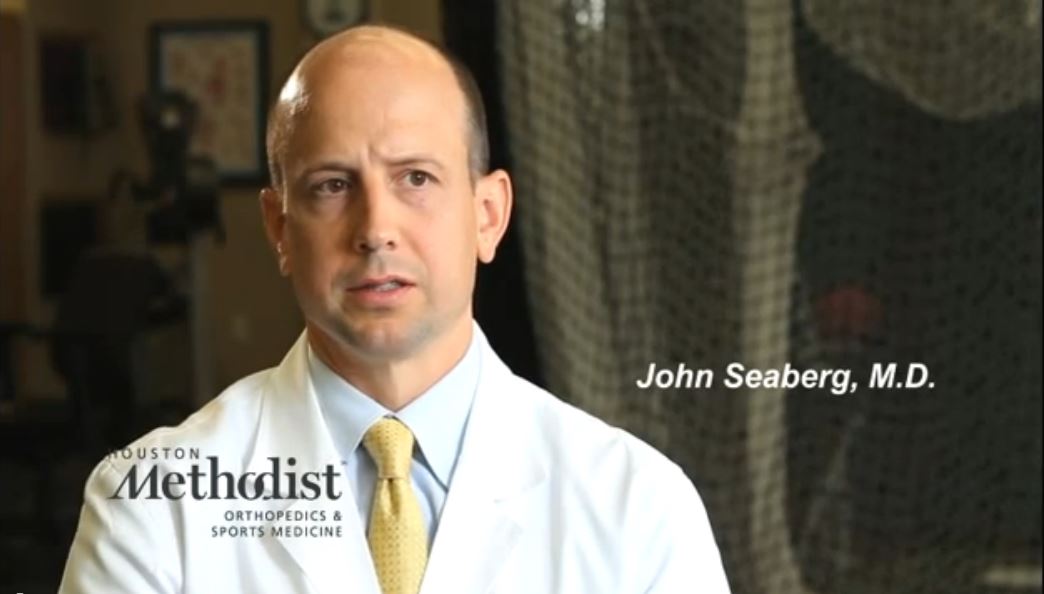Fractures & Dislocations
Fractures and dislocations are common injuries in sports. Often the result of a direct impact in a contact sport or accident, a fracture is a break in the bone and a dislocation is the displacement of a joint from its normal position. While often evident upon physical examination, an X-ray can usually confirm the diagnosis as well as assess any other damage to surrounding tissue.
Houston Orthopedic Surgeon, Dr. John Seaberg explains the various forms of shoulder dislocations and appropriate surgical treatments.
Joint dislocations can vary in severity – and may also include damage to the joint capsule and surrounding muscles, blood vessels and nerves. Symptoms include swelling and pain, restricted movement and sometimes a visible deformity. Treatment depends on the severity of the dislocation and other soft tissue damage.
Fractures
In some cases, however, fractures cannot be seen with an X-ray. This is particularly common with stress fractures, as well as hip fractures and wrist fractures in older people. In these cases, the doctor may perform a computed tomography (CT) scan, magnetic resonance imaging (MRI), or a bone scan to diagnose.
Fractures require medical attention, particularly if it is an “open fracture” (pierces through the skin). Fractures that do not pierce through the skin are considered “closed fractures.”
If a fracture is suspected, ensure that the injured area is protected, or secured before traveling to an emergency room or waiting to see a physician. A splint made of a rigid material around the injury will keep it from moving and elevation will reduce swelling. The type of treatment indicated will depend on the type of fracture and severity of the injury.
Classifications that help determine the best fracture care include:
- Transverse Fracture – A fracture that goes across the bone and is situated at a right angle to the long axis of the bone.
- Greenstick Fracture – A fracture situated on only one side of the bone, causing a bend but not a complete break. These are most commonly seen in children with more “pliable” bones.
- Comminuted Fracture – A fracture that results in three or more bone fragments.
- Intra-articular Fracture – A fracture with joint involvement.
Depending on the severity of the fracture, treatment may entail the non surgical realignment of the bone and casting, also referred to as closed reduction – or surgical repair utilizing fixation support.
In order for fractured bones to heal, they must be set in the proper place and held there. After setting, the bone is usually immobilized and placed in a cast or splint. Rehabilitation therapy is usually started immediately, even if the bone is in a cast, to ensure good blood flow and prevent muscle loss and stiffness.
After the cast or splint is removed, it is important to work on range of motion and gradually rebuilding strength in the limb.


